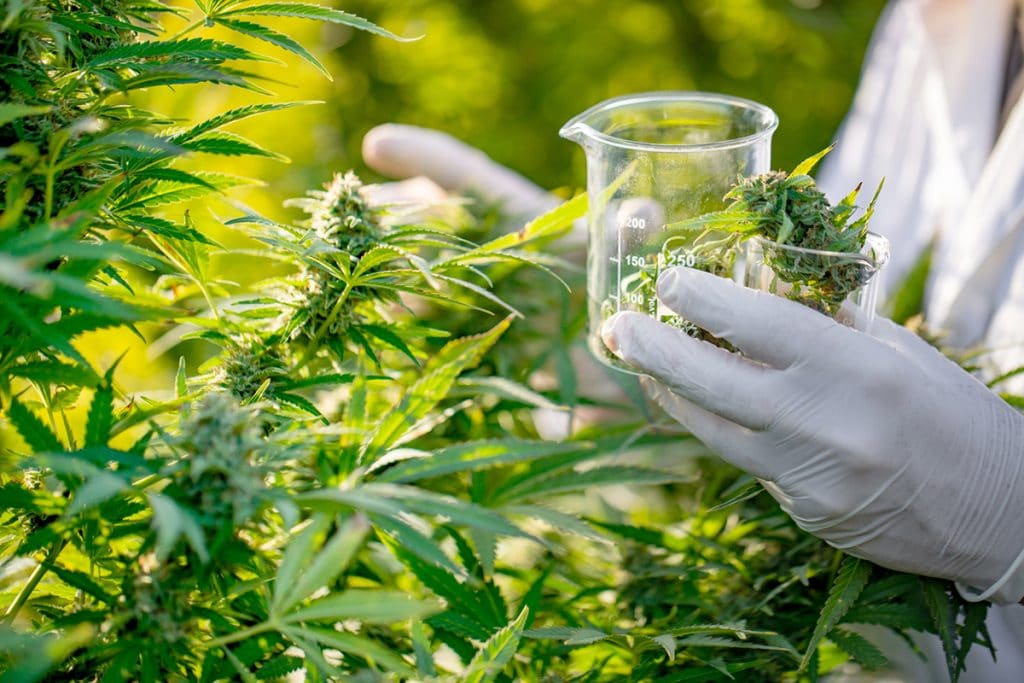By: Paul Stevenson
Now that you have read Part I of the USDA Hemp Production Plan series on the license requirements for hemp producers, it is critical to understand USDA’s methods and regulations for the sampling and testing of hemp for tetrahydrocannabinol (“THC”) concentration levels. Keep in mind: “tetrahydrocannabinol” and “delta-9 tetrahydrocannabinol” are interchangeable phrases for THC.
Comprehending USDA’s provisions on the sampling and testing of hemp is paramount since hemp producers, if in violation, might be subject to serious consequences such as USDA enforcement actions, or potentially even criminal liability. These repercussions will be discussed further in Part III of this Series; however, hemp producers may avoid these consequences if they comply with the following provisions.
Sampling & Testing for USDA’s Acceptable Hemp THC Level
Producers must have their hemp sampled by either a USDA-approved agent or a federal, State, or local law enforcement agency within 15 days prior to the harvest of the hemp. The licensed hemp producer is to be present throughout the sampling during normal business hours, and he/she is to give the sampling agent unrestricted access to all their hemp and cannabis plants, as well as to all locations listed in their license in which these plants are cultivated, harvested, handled, and/or stored.
Under the USDA plan, the sampling and testing will be done from the flower material of the hemp producer’s cannabis plant and must be representative of their entire lot. USDA defines “lot” to mean a “contiguous area in a field, greenhouse, or indoor growing structure containing the same variety or strain of cannabis throughout the area.” USDA Interim Rules § 990.1. This requirement is imposed to make sure the entirety of the producer’s hemp crops is reliably in compliance with USDA standards.
The sampling and testing methods used must ensure the plant is “sufficient at a confidence level of 95 percent that no more than one percent (1%) of the plants in the lot would exceed the acceptable hemp THC level.” Id. at § 990.24. According to the USDA plan, “acceptable hemp THC level” is defined as the following:
When a laboratory tests a sample, it must report the delta-9 tetrahydrocannabinol content concentration level on a dry weight basis and the measurement of uncertainty. The acceptable hemp THC level for the purpose of compliance with the requirements of State, Tribal, or USDA hemp plans is when the application of the measurement of uncertainty to the reported delta-9 tetrahydrocannabinol content concentration level on a dry weight basis produces a distribution or range that includes 0.3% or less. For example, if the reported delta-9 tetrahydrocannabinol content concentration level on a dry weight basis is 0.35% and the measurement of uncertainty is +/- 0.06%, the measured delta-9 tetrahydrocannabinol content concentration level on a dry weight basis for this sample ranges from 0.29% to 0.41%. Because 0.3% is within the distribution or range, the sample is within the acceptable hemp THC level for the purpose of plan compliance. This definition of “acceptable hemp THC level” affects neither the statutory definition of hemp, 7 U.S.C. § 1639o (1), in the 2018 Farm Bill nor the definition of “marihuana,” 21 U.S.C. § 802(16), in the CSA. Id. at § 990.1.
As you see, the above-mentioned provisions of federal law remain in effect for administrative, civil, and criminal purposes. Thus, it is imperative for a hemp producer to use all reasonable efforts to keep their THC concentration levels below 0.3 percent since the federal (CSA) definition of marihuana continues to include those parts of the cannabis plant, as specified in 21 U.S.C. 802(16), having more than the 0.3 percent threshold. In Part III of this Series, we address negligent violations if reasonable efforts are used resulting in a THC concentration level above 0.3 percent but below 0.5 percent and we will elaborate on what USDA does consider to be a violation of its requirements.
Now, back to THC. The USDA defines and calculates “dry weight basis” as a “percentage of THC, by weight, in a cannabis item (plant, extract, or other derivative), after excluding moisture from the item.” Id. Furthermore, the “measurement of uncertainty” acts like a margin of error and helps to evaluate the accuracy of test results. The term “acceptable hemp THC level” just provides for USDA’s method of tracking the uncertainty of test results. Reported levels of THC concentration might not be the sample’s actual concentration…the actual THC concentration falls within a range as determined by the combination of the acceptable hemp THC level and the measurement of uncertainty.
USDA establishes how a sample test of hemp that exceeds the acceptable hemp THC level shall be “conclusive evidence” that the hemp producer’s lot is not in compliance with the USDA plan. See id. at § 990.25. If the tested cannabis plants are deemed to be non-compliant, hemp producers are required to dispose of them in accordance with CSA and DEA regulations. Disposal must be done by a DEA-registered agent or USDA-authorized Federal, State, or local law enforcement officer. Furthermore, hemp producers must notify USDA of their intent to dispose of the non-compliant plants and verify it with proper documentation, which shall be sent to USDA within 30 days of disposal.
DEA Laboratory Registration and Testing
It is of the utmost importance for hemp producers to understand the following USDA requirements: under the USDA plan, the testing of THC levels of hemp must be conducted by a DEA-registered laboratory. Registration with the DEA is required since these labs might be dealing with cannabis that exceeds the 0.3 percent THC concentration threshold, which as described above, would fit the definition of marihuana, a Schedule 1 controlled substance. If the Final Interim Rules are adopted, further instructions on how labs are to obtain DEA registration, along with a list of approved labs, will be available on the USDA Domestic Hemp Production Program website.
These labs must ensure their methods and procedures are appropriate, accurate, consistent, reliable, and valid, and that their reports of THC results include the measurement of uncertainty. According to the USDA plan, these DEA-registered labs must, at a minimum, perform the following testing:
[A]nalytical testing of samples for delta-9 tetrahydrocannabinol concentration levels must use post-decarboxylation or other similarly reliable methods approved by the Secretary. The testing methodology must consider the potential conversion of delta-9 tetrahydrocannabinolic acid (THCA) in hemp into delta-9 tetrahydrocannabinol (THC) and the test result reflect the total available THC derived from the sum of the THC and THC-A content. Testing methodologies meeting these requirements include, but are not limited to, gas or liquid chromatography with detection. Id.
The total THC level is also to be determined on a dry weight basis (as defined in the section on Sampling & Testing above). This is a new change — we now have clarification that THCA will count towards total THC content. If a hemp producer believes their test results were in error, they may request further testing.
Hemp Producers’ Post-Testing Responsibilities
After all the proper sampling and testing has been completed, hemp producers must harvest their hemp within fifteen (15) days of the date of sample collection. If the hemp producer fails to harvest within this timeframe, USDA mandates a second pre-harvest crop sample to be tested. However, if the hemp does meet the acceptable hemp THC level, the hemp producer may proceed to harvest and sell the crop.
You are likely wondering, “What else is expected of me?” These answers are found in Part III of the USDA Hemp Production Plan series.
Preview of Part III:
In Part III, the final section of this Series, we will analyze the USDA plan’s provisions relating to hemp producers’ compliance, negligent violations, license suspension and revocation, and recordkeeping. Keep in mind, the USDA plan has not yet been finalized and that the USDA is currently receiving public comment on the Interim Rules.







